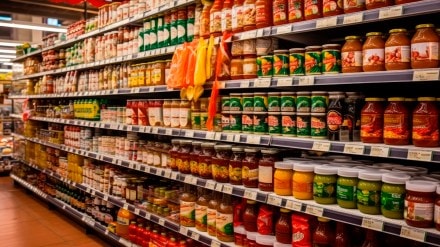An early onset of monsoon in India will have a positive impact on farm incomes and rural demand, top executives at some of the country’s leading fast-moving consumer goods (FMCG) companies have said. Coming at a time when urban demand is recovering slowly, the prospect of rural demand gaining momentum is a plus for the Rs 5-lakh crore domestic FMCG market, which has had a difficult FY25, executives said.
“An early arrival of the south-west monsoon is definitely good for the domestic FMCG market because it will give a fillip to the rural economy. Rural demand should get a bigger boost as a result, which is a positive for companies,” Mohit Malhotra, chief executive officer (CEO), Dabur India, said.
While the government’s fiscal stimulus measures have begun kicking in from April onwards, FMCG companies expect to see an impact on urban consumption with a lag as most consumers are likely to discharge debt and other financial obligations first with the extra money in hand.
For perspective, a third of FMCG sales in India come from rural areas, while two-thirds come from urban markets. Rural markets, however, have traditionally been the growth engine for the sector, researchers such as NielsenIQ and Kantar say, with overall growth rates improving when rural demand is robust.
“The early monsoon augurs well for our agricultural crops and rural incomes. It should hopefully lower food prices and therefore food inflation. Overall, a positive development for FMCG companies,” Suresh Narayanan, chairman and MD, Nestle India, said.
The current rain spell, the India Meteorological Department (IMD) said on Saturday, is the earliest onset of monsoons in India in 16 years, with the rainfall spreading fast across the country. Apart from Kerala, parts of Tamil Nadu, Karnataka and Goa, the southwest monsoon has covered Maharashtra, Andhra Pradesh, West Bengal and parts of the northeast. The early arrival is expected to aid farmers while planting crops such as rice, cotton, corn, soybeans and sugarcane as part of the kharif season.
“Early sowing coupled with good soil moisture could improve crop yields. This will boost sentiment in the rural areas, which is good from a consumption standpoint,” Mayank Shah, vice-president at Parle Products, said.
FMCG companies are hoping this will translate into better sales during the crucial festive season, which will kick off with regional festivals such as Onam and Ganesh Chaturthi in the July-September period. The big test for rural demand, though, will be the Dussehra-Diwali period in the October-December period when rural consumers are expected to have more money in their hands due to good rainfall and harvests, sector experts said. Some firms are hoping that urban demand could show signs of improvement by then.
Tarun Arora, CEO and whole-time director at Zydus Wellness, said that the rainfall will have to be steady throughout the next two to three months for the sowing season to be good this year.
“The pace of the monsoon spread as well as its intensity will have to be monitored closely for the next few months. If the monsoons turn erratic, that could have a negative impact on agriculture and farm incomes,” Arora said. The IMD has said that the 2025 monsoon season may not see a dry spell, with the rainfall expected to be above-average for the second year in a row.
